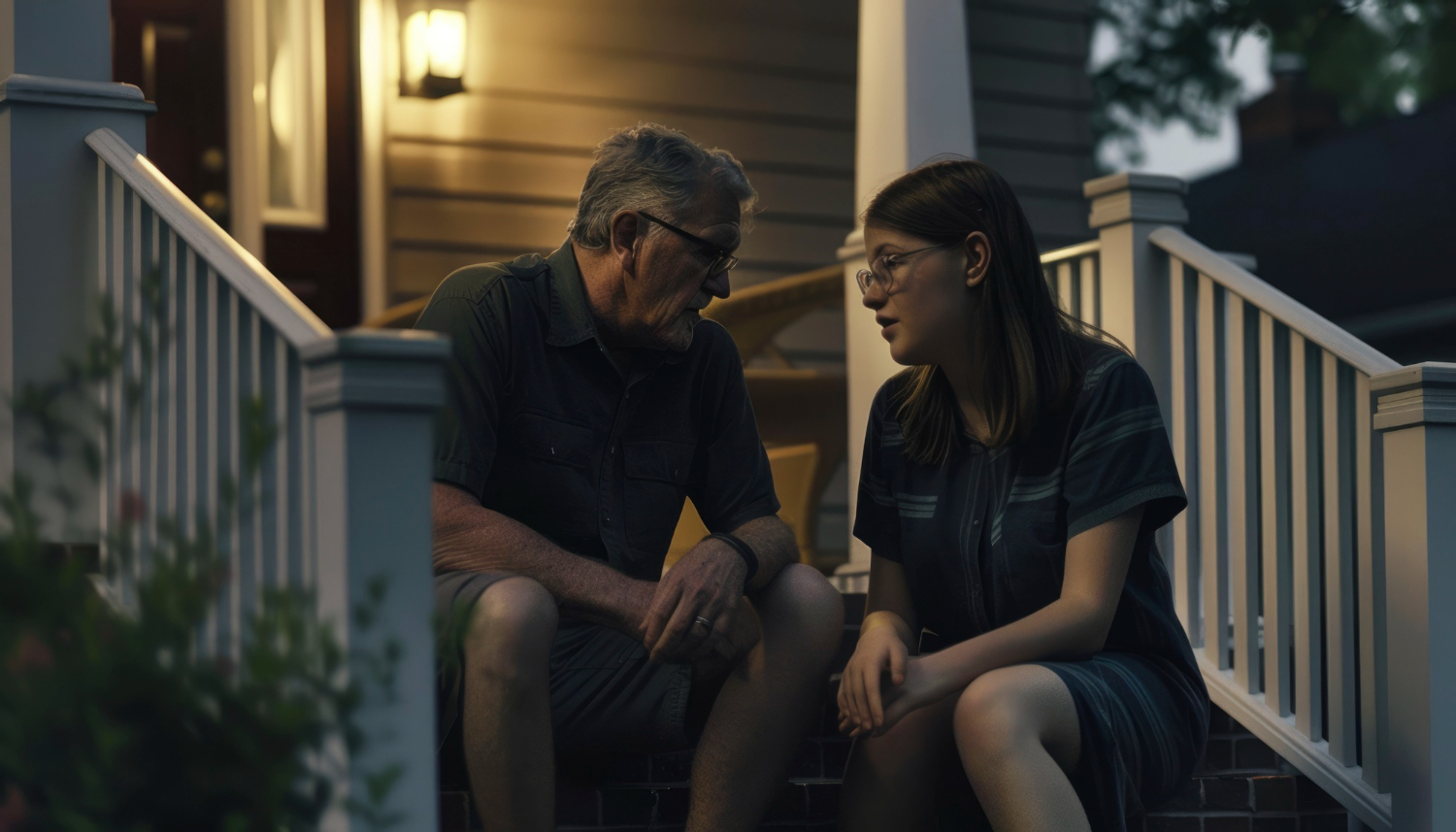
Losing someone you love creates a void that can feel impossible to fill. The journey through grief isn't linear, and rebuilding your life afterward requires immense courage, patience, and self-compassion. According to the American Psychological Association, approximately 10-20% of bereaved individuals experience complicated grief that significantly impairs their functioning for years after a loss.This guide offers practical strategies for navigating the complex terrain of grief recovery, backed by research and expert insights to help you find your way forward.
Understanding the Grief Process
Grief is a natural response to loss, but its experience varies greatly among individuals. The outdated concept of "stages of grief" has evolved into a more nuanced understanding of grief as a complex, non-linear journey.
The Individuality of Grief
Research published in the Journal of the American Medical Association reveals that only about 30% of bereaved individuals follow anything resembling the classic "five stages" model. The reality is far more fluid, with emotional states often overlapping and recurring rather than progressing in a straight line."Grief is as unique as a fingerprint," explains Dr. Katherine Shear, Director of the Center for Complicated Grief at Columbia University. "Each person's experience is shaped by their relationship with the deceased, circumstances of the death, personal coping style, and available support systems."
Common Grief Responses
While everyone grieves differently, some experiences are relatively universal:
- Emotional responses: Sadness, anger, guilt, anxiety, relief, numbness
- Physical symptoms: Fatigue, sleep disturbances, appetite changes, lowered immunity
- Cognitive effects: Difficulty concentrating, confusion, preoccupation with the deceased
- Behavioral changes: Social withdrawal, restlessness, avoiding or seeking reminders
A 2019 study in the Journal of Health Psychology found that approximately 63% of bereaved individuals report physical symptoms during acute grief, highlighting the profound mind-body connection in the grieving process.

Immediate Aftermath: Navigating the Crisis
The days and weeks following a loss can feel like moving through a fog. Here are strategies for this critical period:
Allow Yourself to Feel
Research from the University of Memphis shows that those who allow themselves to experience grief rather than suppress it show better long-term adjustment. Give yourself permission to feel whatever emotions arise without judgment.
Practical Matters
Focus on immediate needs:
- Funeral arrangements and memorial services
- Notifying relevant parties
- Managing the deceased's affairs
- Securing necessary documents
Pro tip: Enlist help for these tasks. According to a survey by the National Funeral Directors Association, 65% of people find handling these practical matters overwhelming during acute grief.
Build a Support System
Don't face grief alone. A comprehensive study in the Journal of Social and Personal Relationships found that social support is one of the strongest predictors of positive grief outcomes. Reach out to:
- Family members
- Close friends
- Religious or spiritual communities
- Bereavement support groups
- Mental health professionals
The Middle Path: Adjusting to a New Reality

As the initial shock subsides, you enter a period of adjustment. This phase can last months or even years.
Honoring Your Needs
Pay attention to:
- Physical health: Grief takes a physical toll. A study in JAMA Internal Medicine found a 21% increased risk of heart attack in the days following a significant loss. Prioritize:
- Regular sleep patterns
- Nutritious meals
- Gentle physical activity
- Medical check-ups
- Emotional health: Find healthy outlets for your feelings:
- Journaling
- Creative expression
- Talking with trusted individuals
- Professional counseling if needed
Creating Meaningful Rituals
Rituals provide structure and meaning during chaotic times. Research in the Journal of Family Psychology demonstrates that personalized rituals help reduce grief intensity. Consider:
- Special remembrances on significant dates
- Creating a memorial space in your home
- Participating in activities your loved one enjoyed
- Contributing to causes they supported
Setting Boundaries
Not everyone will understand your grief journey. According to grief expert Dr. Kenneth Doka, approximately 40% of bereaved individuals experience some form of "disenfranchised grief" where their loss isn't fully acknowledged by others.Learn to:
- Decline invitations when needed
- Explain your needs clearly
- Distance yourself from unhelpful interactions
- Seek environments where your grief is respected
Moving Forward: Integration and Growth
The goal isn't to "get over" your loss but to integrate it into your continuing life story.
Finding Meaning
Research by psychologist Dr. Robert Neimeyer shows that creating meaning from loss is central to healthy grief adaptation. This doesn't mean finding something "good" in the tragedy but rather constructing a narrative that helps you make sense of your experience.Ways to find meaning include:
- Identifying lessons learned
- Recognizing personal strength
- Deepening appreciation for life
- Strengthening meaningful relationships
- Contributing to others' wellbeing
Redefining Identity
A significant loss often triggers an identity crisis. According to a large-scale study published in Death Studies, approximately 73% of bereaved spouses report questioning their identity following their loss.Consider:
- Which roles have changed?
- What aspects of yourself remain constant?
- What new qualities have emerged through your grief?
- How might your values have shifted?
Creating a New Life Narrative
Rebuilding doesn't mean forgetting. Research in the Journal of Consulting and Clinical Psychology shows that maintaining continuing bonds with the deceased while investing in new life activities leads to the healthiest outcomes.This dual process involves:
- Honoring your loved one's memory
- Gradually engaging with new possibilities
- Allowing joy without guilt
- Finding ways to incorporate their legacy into your future
Practical Strategies for Rebuilding
Rediscover Your Interests
Grief can temporarily disconnect you from activities that once brought joy. A study in the British Journal of Guidance & Counselling found that reengaging with personal interests significantly improved quality of life for bereaved individuals.Start with:
- Revisiting former hobbies
- Exploring new interests
- Joining classes or groups
- Volunteering for causes you care about
Restructure Your Environment
Your physical space can support your healing journey. According to environmental psychology research, making thoughtful changes to your living space can facilitate emotional adjustment after loss.Consider:
- Reorganizing rooms to reflect your current needs
- Creating comfortable spaces for reflection
- Preserving meaningful mementos while allowing for change
- Introducing elements that energize and comfort you
Build New Connections
While existing relationships remain important, new connections can provide fresh perspectives. Research in Social Science & Medicine demonstrates that expanding social networks after loss correlates with improved psychological wellbeing.Opportunities include:
- Interest-based groups
- Community organizations
- Support groups for the bereaved
- Online communities with shared experiences
Develop New Routines
Establishing new patterns provides stability during transition. A study in the Journal of Positive Psychology found that daily routines significantly contribute to post-loss adjustment.Effective routines:
- Provide structure without rigidity
- Include self-care practices
- Balance solitude and social time
- Incorporate meaningful activities
When Grief Becomes Complicated
While all grief is painful, approximately 7-10% of bereaved individuals develop complicated grief, according to research published in World Psychiatry. This condition involves persistent, intense grief that doesn't improve with time and significantly impairs functioning.
Warning Signs
Seek professional help if you experience:
- Intense yearning that doesn't diminish over months or years
- Preoccupation with the deceased that interferes with daily functioning
- Inability to accept the reality of the loss
- Persistent feelings of guilt, bitterness, or emptiness
- Avoidance of all reminders of the loss
- Feeling that life has no meaning without the deceased
- Suicidal thoughts or wishes to join the deceased
Effective Treatments
Research shows promising results for specialized interventions:
- Complicated Grief Therapy (CGT)
- Cognitive Behavioral Therapy (CBT)
- Trauma-focused therapies for traumatic losses
- Medication in combination with psychotherapy
Special Considerations
Children and Grief
Children grieve differently than adults. According to the Childhood Bereavement Network, approximately 5% of children in developed nations will experience the death of a parent before age 16.Supporting grieving children involves:
- Age-appropriate explanations
- Maintaining routines and boundaries
- Encouraging questions and expression
- Involving them in memorialization
- Connecting with school resources
- Modeling healthy grief
Traumatic Loss
Deaths that are sudden, violent, or perceived as preventable present unique challenges. Research in the Journal of Traumatic Stress indicates that traumatic losses increase the risk of complicated grief and post-traumatic stress disorder.Additional considerations include:
- Trauma-informed therapy approaches
- Processing both the trauma and grief components
- Patience with trauma responses (flashbacks, hypervigilance)
- Specialized support groups for similar losses
The Path Forward: Hope and Resilience
Rebuilding your life after loss doesn't happen overnight. According to longitudinal research in the Journal of Personality and Social Psychology, most bereaved individuals report significant improvement in functioning between 18-24 months after a major loss, though the grief itself may continue in different forms.
Signs of Healing
Healing doesn't mean forgetting. Look for these positive indicators:
- Ability to talk about your loved one with a balance of sadness and positive memories
- Reengagement with meaningful activities
- Capacity for joy and new experiences
- Formation of an integrated narrative about your loss
- Recognition of your own resilience and growth
Continuing Bonds
Modern grief theory emphasizes maintaining healthy continuing bonds with the deceased rather than "letting go." A study in Death Studies found that 87% of bereaved individuals maintain some form of ongoing connection with their loved ones.Healthy continuing bonds include:
- Internalizing positive qualities of the deceased
- Imagining their perspective on current situations
- Creating legacy projects
- Marking significant occasions
- Finding comfort in mementos
Conclusion
Rebuilding your life after losing a loved one is perhaps one of life's most challenging journeys. There is no perfect roadmap, no prescribed timeline, and no single "right way" to grieve. What matters is finding your own path forward—one that honors both your loss and your continuing life.Remember that healing is not linear. You may experience setbacks, especially around significant dates or during major life transitions. These are normal parts of the grief journey, not evidence of failure.With time, patience, and support, many bereaved individuals discover not only that survival is possible but that profound growth and renewed purpose can emerge from the depths of loss. Your life will never be the same, but it can still be meaningful, connected, and even joyful again.





























